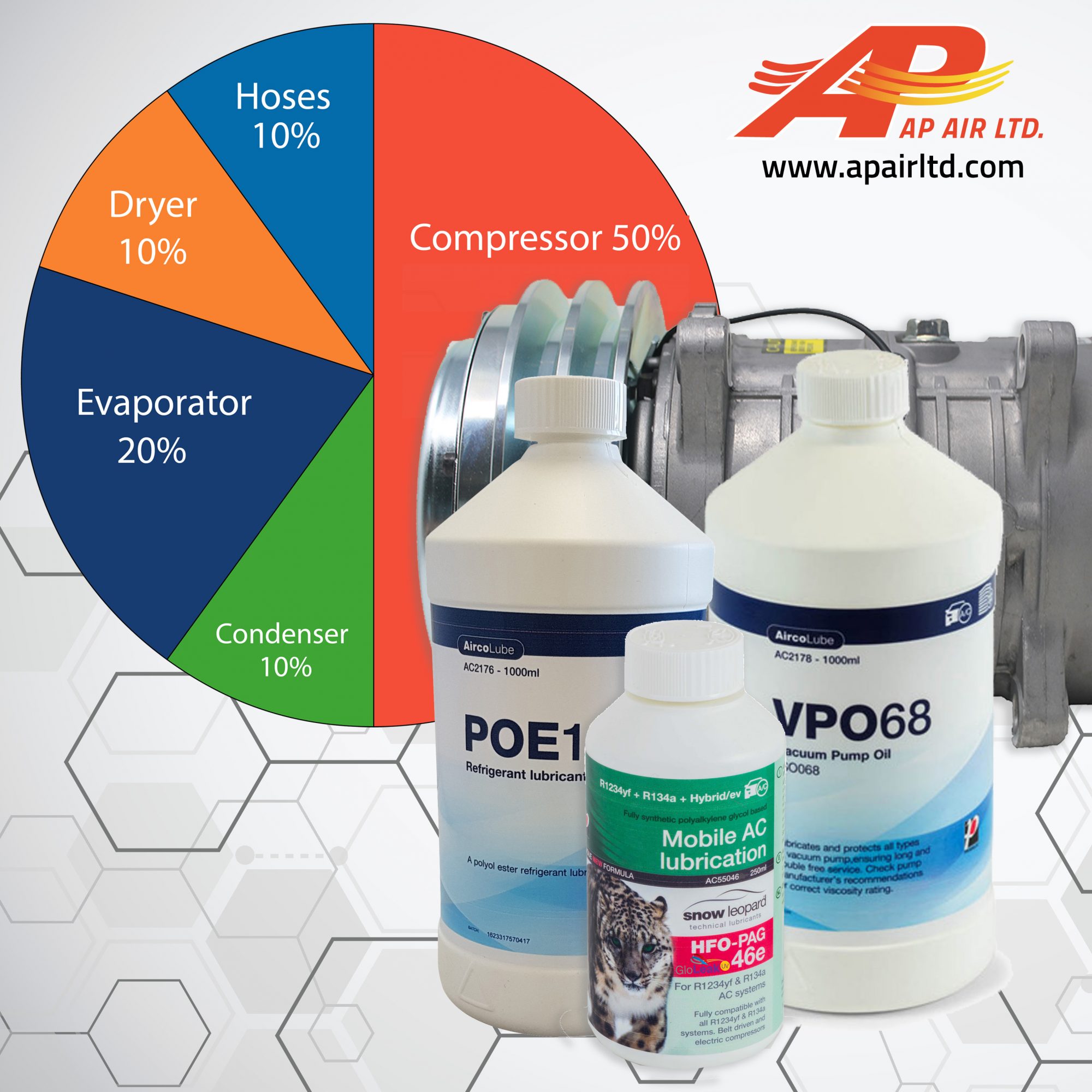OIL YOU NEED TO KNOW ABOUT AC SYSTEM LUBRICATION!

Everyone agrees that refrigerant oil is key to a healthy system; as well as lubricating the compressors internal components it’s also a heat absorber and sealing agent for rubber parts such as hoses and seals. The fast-paced world of AC system lubricants means you might be forgiven for confusing your PAGs with your POEs but the repercussions for your circuit will be harsh. This month’s blog takes a look at the different lubricant technologies on the market.
Subject to the advice of the compressor manufacturer and the refrigerant being used, there are 4 main types of oil to consider.
PAG oil (Polyaklyene glocol) – One of the first man-made lubricants to be developed, PAG is used in R134a systems and also R1234yf systems which require specialist PAGs. The different types of PAG such as PAG46, PAG100 etc… reflect the varying oil viscosity (the measure of an oil’s resistance to flow) and the refrigerant it’s designed for. PAG oil is hygroscopic which means it attracts moisture from within the air-conditioning circuit or atmosphere. Since the absorbed water remains both hydrogen bound to the PAG’s ether linkages and non-reactive with the PAG, this property is actually beneficial.
Mineral oil (MO) – Though well represented in the market, these oils are arguably on borrowed time. They mix badly with Hydrofluorocarbons (HFC) such as R134a, and whilst engineering and technological advancements have raised the bar on lubricant performance, it’s the synthetic market that has forged ahead.
PAO Oil (Polyalfaoleifin) – A mineral synthetic oil commonly used in car motor vehicles, PAO has low hygroscopicity properties and won’t introduce unwanted moisture when added to the system. Although unapproved as an AC lubricant by manufacturers, ISO 68 grade PAO is often used in the mobile aftermarket as a “universal” compressor oil.
POE Oil (Polyolester or ester oil)
Polyol ester or POE is a fully synthetic lubricant developed for systems using HFC refrigerants. Providing high lubricity and chemical stability with system components, POE also offers good miscibility (the ability to mix with refrigerants and HFCS). Manufactured from a reversible chemical reaction between acids and alcohol to form polyolesters and water, POE lubricants are less hygroscopic than PAG ones, however if exposed to large quantities of water there’s a risk of a natural reverse reaction leading to acid formation and corrosion of system components. PAG oils are not subject to the same chemistry.
TOP TIP! – Avoid mixing PAG with universal oils. At first sight these two oils appear to mix thoroughly, but don’t be deceived! They are actually unable to form a long-lasting homogenous mixture and will separate after a short period of time when the compressor is not running. Consequently, when the compressor starts from cold, the differing density and viscosity of the oils will result in imprecise lubrication inside the AC compressor, leading to friction, overheating and seizure.
Click HERE to view our comprehensive range of refrigerant oils or call our sales team on 01453 891320 for technical support.
